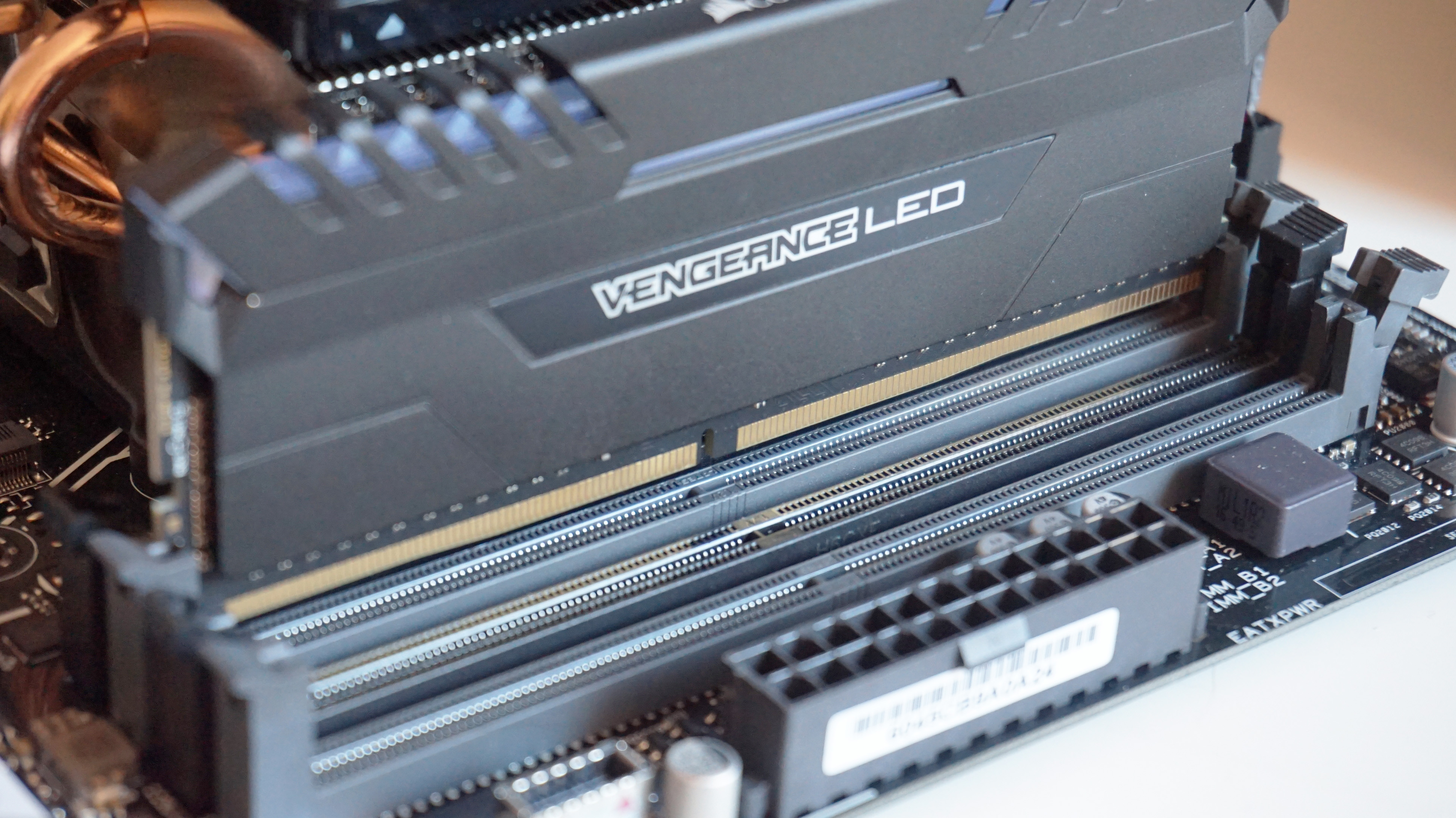4 Slots Of Memory


If only two of the blue memory slots are populated with matched DIMMs, dual-channel mode is enabled. Quad-channel mode This mode is enabled when four (or a multiple of four) DIMMs are identical in capacity and speed, and are put in quad-channel slots. When two memory modules are installed, the system operates in dual-channel mode. If you have enough workstations then can you fill all 4 slots with memory 'borrowed' from the other workstations? Even if it is not 4 x 4, 4 x 2 or even 2 x2 & 2 x1 to try and prove the whether 4 slots work meaning you are not using this Crucial memory in the test? Maybe HP made a mistake with the BIOS or Board and not you. I use Piriform Speccy. In task manager for win8, i see that memory says slots used 1 out of 4, which is currently 4 GB, but when i opened my laptop i can only see two. It also says slot 1: empty; slot 2: empty; slot 3: 4.0 GB,1333 MHz; slot 4: empty.
Slots
This is the total number of memory upgrade slots (sockets) followed by their configuration. Banks are the way a system addresses memory. A bank must be completely filled with memory modules of the same size and type in order for the system to recognize and address the memory. i.e. :
3 (3 banks of 1) This indicates that there are 3 memory slots. These are divided into 3 banks, and each bank consists of one memory slot. So you can add memory one piece at a time for the system to use.
4 (2 banks of 2) This indicates that there are 4 memory slots. These are divided into 2 banks, and each bank consists of two memory slots. So you must add memory two pieces at a time (they must be the same size and type of memory) in order for the system to benefit from the upgrade.
12 (3 banks of 4) This indicates that there are 12 memory slots. These are divided into 3 banks, and each bank consists of four memory slots. So you must add memory four pieces at a time (and they must be the same size and type of memory) in order for the system to benefit from the upgrade.

A memory slot, memory socket, or RAM slot allows RAM (computer memory) to be inserted into the computer. Most motherboards have two to four memory slots, which determine the type of RAM used with the computer. The most common RAM types are SDRAM and DDR for desktop computers and SODIMM for laptop computers, each having various types and speeds. The picture below is an example of what memory slots may look like inside a desktop computer. In this picture, there are three open and available slots for three memory sticks.

4 Slots Of Working Memory

4 Slots Of Memory Defrag
When buying a new computer or motherboard, pay close attention to the types of RAM the memory slots can accept. Make sure you know exactly the type of RAM to buy for your computer. It is also important to note how many available memory slots are available in your computer. It is not uncommon for computers to have all memory slots occupied. If all slots are full and you want to upgrade the computer memory, you need to remove some or all of the existing memory.
4 Slots Of Memory
Why are the memory slots different colors?
When a motherboard has different colored memory slots, it indicates the memory slots are dual-channel, and pairs of memory should be installed on the same channel (color). For example, a motherboard could have two yellow and two black memory slots. The yellow memory slots could indicate Channel A and Channel B could be indicated by the black slots. If you were only installing two memory sticks, you'd want to install both of them in Channel A (yellow slots) for optimal performance.
Related pages
Memory module, Memory terms